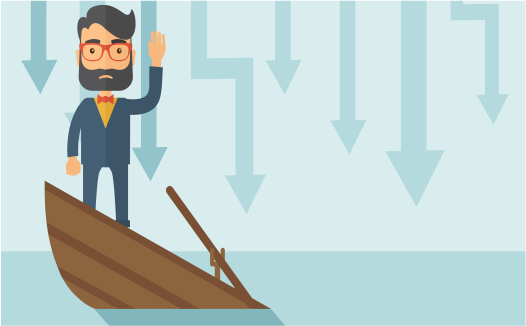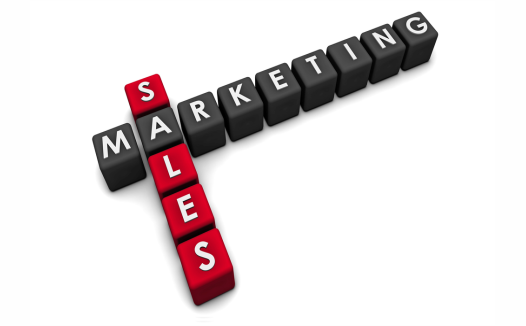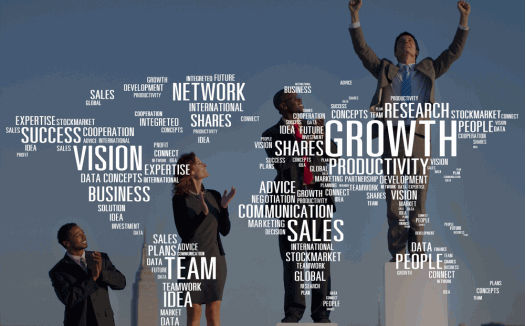When Should you Go for Sales Enablement Tools?

As per industry figures, only a third of the sales team meet their quota, and just a few exceed it. So how does an organization get its sales team to deliver a great performance? Simple answer really- get in new tools to help your sales team. Empirical evidence shows that the right sales enablement technology implemented correctly, at the right time, makes the difference between lead, deal, and a loss. Organizations need sales enablement tools for a superlative sales performance. And the perfect time to do it is when you see any of the following happenings in your organization. Onboarding time for new salespersons exceeds the average Thousands of dollars are spent and hundreds of man-hours invested in getting the new salespersons get up to speed in their onboarding. And despite this, the performance is average or even poor. The right sales enablement tool can help cut this time by 30 to 40 % while ensuring the right content and knowledge of products and services are at hand for the new sales team to move ahead with confidence, sound knowledge and perform well. Productivity is suffering due to less time spent on core selling Sales productivity is a challenge, has been one, for a long time for many B2B companies When sales productivity dips, revenue is heavily impacted. The primary cause of this decline is attributed to the sales team performing more functions other than core selling. Usually, these tasks are routine, non-core and repetitive. Perfect candidates for automation. A good example would be a CRM that helps automate major such tasks and increases productivity by at least 30%. A blanket approach to sales The buyer is getting smarter and more demanding. If sales are using a blanket approach to selling, then it is the seller’s loss, for certain. To stem the loss and to transform the selling process vis-à-vis the changing buyer scenario, it is critical to get into automation. These tools can help tailor the offering or solution based on buyer persona, preferences while also tailoring the content, messaging and interaction timing between the salesperson and buyer. Sales strategies have to take this into account to ensure that the sales team meets the buyer one-on-one, thus improving effectiveness. Taking the sales further in the journey is a problem There is a cost attached to not taking the sale further in its journey, in time and in the right manner. Often, salespersons are not aware of how to do it; they get stuck after a point, or maybe they are not so sure about the next step in certain situations. Sales enablement tools like relationship mapping come to the rescue once again by helping the salespersons with the right help through persona-based selling tips, just-in-time coaching, and effective collaterals. These are also instantly accessible to any of the sales team members. Sitting on the fence ends up in more losses than anything else It is incredible to note that anything up to 50% of the sales forecasts ends up as a no-decision. Something that is neither here nor there and as time lapses, the decision goes the wrong end of the funnel and is declared as a lost deal. It is interesting to see that this happens because, in many cases, it is easier to do nothing. “Why challenge the status quo?” is always a better proposition. With sales enablement tools, it is easier to overcome the status quo. This happens by offering value. The more the salesperson gets to the depth of the prospect and understands his business, addresses his pain points, the more the engagement between the salesperson and the buyer. This often results in a deal. Sales enablement tools help salespersons by guiding them on how to build a case, helps them to engage the prospects with value-added content and help them to advance the deal. The right content at the right time is not available to the sales team A survey shows that 90 percent of content is not used. Where we know that impactful content influences 95 percent of B2B sales, sales teams say they never have the right content on hand when they want it. As a result, sales teams waste valuable time away from core selling and in finding the right content or creating it themselves. With sales enablement tools, real-time data shows what content a sales rep may need at what time for a maximum turnaround and helps put up that content for the salesperson to use. Right content, at the right time for the right sales person, is the best thing that can happen to sales effectiveness. Limited insights into what works and what doesn’t, hampers the sale If data is there, then data analytics are not there; this is true in many cases. This hampers the sale as has been proven time and again. Insights help in closing a deal because insights help the salesperson in knowing more about his prospect. Sales enablement tools help in data mining and with predictive analysis helps the sales persons to glean insights from data captured. This helps the sales team to improve sales performance, through improved productivity, increased effectiveness and thus improves revenues. The above 7 signs are clear indications of when an organization should start getting in automation and look at sales enablement seriously. If you have spotted any of the above signs, we recommend you start getting into action immediately and get in Sales Enablement.
Tightening the Lead-to-Deal Cycle with Sales Enablement

The first contact of the buyer with company and product information today is the Internet and, more precisely, the handheld device, which is an all-too-familiar sight anywhere in the world, even in its remotest corner. Gone are the days when the company sales representative would knock on the doors of the buyers and share information about his product, hoping to make a sale, eventually. The internet has taken over the lives of the buyers completely. With the kind of overwhelming information that is available on the internet in a single swipe, there is no wonder that the buyer knows a lot about your product, company, competitor products, the category and almost everything there is to know, from the internet. You may, therefore, ask – “Of what use is our sales representative?” Good question. Your sales representative needs to be well equipped with advanced information that will pre-empt all the prospects’ queries, doubts, concerns at that stage of the buying cycle. A sales representative needs to remember that buyer queries at this stage when he has gobbled up all the information from the internet, tends to be highly advanced, specific and sophisticated. How does one handle this? The answer is two powerful words- Sales Enablement. Brainshark defines Sales Enablement as a “Systematic approach to increasing sales productivity, by supporting reps with the content, training, and analytics they need to have more successful sales conversations.” Sales Enablement demystified For all the glamor or mystery that shrouds sales enablement, it is a simple concept that encompasses all those activities that optimize the effectiveness of the sales effort. Sales enablement is known to increase sales productivity with sales enablement tools. It covers many aspects such as client-facing content; education and analysis; coaching, training, buyer’s insight, content creation, guidelines for using sales assets, sales automation, technology for finding and accessing the right content, and fast and easy access to the right content and knowledge. This helps the salespeople in having all the tools at their beck and call so as to focus on providing value during client discussions. It has been shown in a survey of 400 B2B Sales and Marketing professionals that 57 % ranked their sales efforts and effective or very effective, in organizations that had sales enablement. In another survey, one could see a clear 50% increase in sales team goal attainment. It is all very well to see and say that sales enablement is a must for sales effectiveness and sales acceleration. However, implementing it the right way needs a certain amount of discipline on the organization’s front. This can be applied in three ways: Sales and Marketing working as a Team Too often we see sales and marketing passing the buck on each other. Sales say, marketing does not generate enough leads or generates poor leads, while marketing says, sales wastes the leads given to them. If instead, the two join hands and communicate in unison with the customer, the effort will be fruitful. Marketing can glean and share insights generated through nurture campaigns and digital listening with sales. This way, sales can work on intuitive insights thus leading to better results and conversions with customers. Integrating systems to ensure the end-to-end lead flow With all the talk going on, about lead generation, nurturing and conversion, one cannot afford to ignore the integration of systems so as to leverage the lead to deal process. The smooth flow of leads in the funnel from marketing to sales is important. Marketing should pass on all the insights to sales that are generated during the nurturing process; they need to create a clear customer profile for sales; so that when sales walk in, they pass on the right message, catch the right white space opportunity and move in for closing the deal. Today, this smooth flowing of leads, lead profiling, and customer understanding is critical because sales come in later in the buying cycle than used to happen earlier. The marketing and sales alignment helps the sales organization follow up with the right communication and cut down the duration of the buying cycle. CXO backing Talking about sales enablement and sales transformation is easy, but implementation, not as much. Like any other new tool, technology, process or practice that needs to be incorporated into an organization, even this one needs top-level backing. The support also has to be active; with clear, planned communication, benefits, and schedules from the top, reinforcing the change. Sales and marketing leadership is the best place to begin this shift. A good part of sales enablement is good, impactful content. If sales have to try hard to access it, they lose time. If they do not understand what content the buyer needs in a face to face discussion, they lose the buyer. Sales enablement does not come alone. To go with it, it needs good content and great integration between sales and marketing, in spirit, function, and systems. This will help organizations in upping their customer experience, making a positive difference in conversion rates and improving sales effectiveness and productivity. Explore the complete guide to Cross-selling and Up-selling to identify unexplored opportunities for your business as well as your clients’ business and grow better in 2021.
Kickstart your Sales Team’s New High in Performance

How equipped is your sales team? What does it have that it can do better at sales? How can it improve its performance on the field? Sales enablement can act as a game changer for your sales team, or rather, the right sales enablement can. Sales enablement, to those not in the know, is a term given to a set of tasks, tools, and processes that help raise the performance of your sales team. In B2B selling, this is the need of the hour. B2B selling is not a linear process, it involves a huge investment in terms of time, patience and resources. Unlike B2C selling, where the selling norms, the rules are pretty set in their ways, B2B selling requires grit and perseverance. Right from creating a strong pipeline to identifying your warm and hot leads, to nurture them to the conversion stage, the process is tedious, to put it simply. If some activities from this process are picked up and put down in an automated module, it only helps the selling process and the sales team. This is what is typically called as sales enablement. While various companies may have different sets of tasks and tools under sales enablement, there are some guiding principles that help the team have the right sales enablement. Listed below are the proven three: Ensure your sales team has a good CRM to work with Step up the quality of the sales team hiring process Change your attitude from short term to long term Good Sales Enablement begins with a good CRM enhancer A good CRM does not alone promise or bring in good sales performance. The CSO must look out for good CRM enhancers which help you mine the data fed in the CRM. A good CRM enhancer typically fetches a higher number of leads, more proposals and quotations dispatched, more conversion from leads and therefore, the highly celebrated target-achievement of the sales team, sometimes even beyond expectations. Most CSOs have to ensure that they leverage their CRM and use the CRM enhancers to enhance their team’s performance. Good salespeople help in Sales Enablement Having good salespeople in your team is an outcome of the right hiring process from targeting to selection as well as the right talent development with respect to clearly identified sales objectives and sales gaps. Not to be missed are the sales remuneration and incentive packages and process improvement, in a reverse order as may befit the organization. Sales mastery is most certainly not the role of one man or woman. In fact, each of the team members of your sales force can develop skill areas in sales enablement based on their interest, experience, gaps in the skill sets and the needs of the company. From the sales team, members may choose to become sales coaches, sales talent hunters, and acquirers, remuneration designers, CRM managers or any other role seen as a good fit. Some team members may choose the overarching mother-role of the sales enabler directing the entire team towards being better sales enabled. With a concerted effort such as the above, the performance of the sales team improves multi-fold. Changing your attitude from short term to long term B2B selling never was and never will be a short-term process judged by the sheer length of the buying cycle it typically entails sales, therefore, has to be looked at as a long-term investment, enablement, and improvement. Buyer profiling should not be restricted to online personas but should be made real through a face-to-face interaction between the salesperson and the buyer. This will aid the buyer data that is fed into the CRM, match the real buyer closely, which will help the sales team in its process from targeting to conversion. Sales enablement and sales transformation will pervade the entire sales process from the content function to the channel function to the demand function. The sooner we realize this and start taking action the better. Explore the complete guide to Cross-selling and Up-selling to identify unexplored opportunities for your business as well as your clients’ business and grow better in 2021.
Why You Should Watch Out for Sales Enablement?

Companies are increasingly understanding the importance of implementing marketing and sales technologies to their functions in order to increase efficiencies and drive growth. Sales enablement is one function that has received increasing acceptance across firms to help sales teams do their jobs better. As a huge chunk of marketing and sales budgets can go into replacing B2B sales representatives, and several months are spent in training new recruits, companies are instead increasingly looking to invest in technology solutions for these teams. However, the extent of adoption differs from one company to another. Companies are generally classified into two sets when it comes to sales enablement. The first set of companies which have made significant and mature investments in the sales enablement function have already experimented with several kinds of solutions. These firms will now look to consolidate their existing basket of tools. In companies where sales enablement is in full swing, it is likely that mature investments have already been made in ramping up the sales and marketing IT infrastructure. Their existing technology bouquet would likely boast of a CRM solution, a marketing automation system, and tools well-suited to their business. These companies also would have senior executives focused on Business Intelligence, Big Data, and Analytics. On the other hand, organizations which have recently come to realize the importance of CRM are yet to entirely expose themselves to sales enablement and sales transformation. They are now focusing on broadening their understanding of the CRM ecosystem, including more tools and obtaining SaaS solutions to enhance their existing marketing and sales technologies. Companies with nascent investments in sales and marketing technologies are likely to spend more time on strategizing. Their primary objective is zeroing in on a solution that helps the sales team save time. The solutions they adopt generally include CPQ, content delivery, proposal automation, and mobile applications, among others. They are generally on the lookout for a scalable platform which can help them with strong analytics. Either situation calls for heavy contribution from an investment into Big Data. According to Aberdeen Group, more than half of the best-in-class firms find it useful to implement analytics to sales data such as past activity and current pipeline. While the general trend points towards an increase in marketing budgets over the next few years, with the sheer range of tools available, the C-suite is expected to be pickier while expanding their technology bouquet. CMOs and CIOs will strive to obtain a more holistic view of the various stages of the project lifecycle, from generating leads to closures. The coming years will only heighten the importance of a more closely-knit relationship between sales and marketing teams, as companies look to consolidate their investments, especially related to SaaS. Having said that, despite the selective investments surrounding SaaS, companies will be willing to make valuable additions to their technology systems. The coming times can be challenging for those who companies who do not fall into either category. The key is to open up to the idea that initial and additional investments in SaaS will be a given, but will prove to be valuable in the long term if they are aligned with the company’s plans and objectives. Explore the complete guide to Cross-selling and Up-selling to identify unexplored opportunities for your business as well as your clients’ business and grow better in 2021.
What is Sales Mastery? Is it the same as Sales Enablement?

Sales Mastery vs Sales Enablement What is Sales Mastery? Sales Mastery is more often than not construed as ‘building a good relationship’. Period. Nothing can be further from the truth. A good sales job is not just about building a good relationship with the prospect or customer, but about sales mastery. Today, sales is more about value selling than anything else. If you are able to convince the prospect that you have value on offer, he is more likely to bite, read buy. Buying, after all, is all about selling value. Sales mastery is about 3 things: Being a domain expert Creating perceived and real value for customers Tapping technology to its fullest to build in efficiencies and effectiveness Being a domain expert All of this takes a lot of hard work and burning the midnight oil if you may. Being a domain expert means you are using most of your spare time and non-working hours in catching up on the domain/industry that you are selling to. This is digging into your own time for research and learning. Only if you know more about the domain of your customer, will you be able to speak, persuade, sell with conviction. Conviction and leadership come with knowledge Talk about how you can add value to his business Talk about numbers, because business, whether you like it or not, is about numbers. Tell your prospects what difference you can make to their business numbers, how it will benefit their business, in how much time and what cost. Talk about the risks and how they are managed, talk about case studies – your best case studies of the past and how they benefitted you. Talk technology Technology needs to be leveraged in order to maximize its potential. In the modern world, data is assuming not just importance but criticality. This data can be used fully to work for sales. The data that is collected can be analyzed to glean a huge amount of valuable information which can go a long way in winning not just sales, but also your customers. Moreover, the customer will know and perhaps appreciate that you have done your homework before you met him. Sales Mastery is about an individual, but sales enablement is about how the organization works to make the individual salesperson work on his sales pitch. It is about using the CRM to work with the marketing team in lead nurturing. It is about a lot of things that we will see below in short. What is Sales Enablement? Sales enablement is a set of tools, techniques, processes, and technology that ‘enable the salesperson’ and the organization’s sales force to make the most of their sales skill sets and move from being good to being great. It is the stepping in of the organization and the stepping up of the areas which will help take the salesperson on the growth path in the value chain and the buyer derive more value at every sales point. Sales enablement is a support system that stands rock solid behind the sales person to deliver efficiencies and effectiveness with the right framework. This framework is chiefly about the sales methodology, process, and technology. This framework is centered around how, by using these three, your sales team can thrive. More in detail, in our forthcoming blogs.
In Complex B2B Selling, Sales Enablement Makes A Huge Difference.

What are the critical elements of sales enablement? They are the sales procedure or methodology, sales process or execution, and technology deployed for reinforcing the process and methodology. Sales Procedure: This is the overall framework, the combination of the way ahead, a larger roadmap, how to do it and, the decisive actions that need to be taken to ensure we go with the big picture. It covers competition analysis and strategy, risk assessment, relationship mapping with key influencers highlighted, and how you leverage them and position how you will deliver value that is seen as ‘value’ by your buyer. There are various procedures and methodologies available, such as Miller Heiman and TAS, but it is more important how you use the one you select for training the team, than which one you select. Sales Process and Execution: In Sales Enablement, this part is the one that needs a lot of detail. It begins with creating the right sales funnel and ends at the execution of the sale. It is about qualifying leads based on deep discovery, working on the right proposals, demo selling, closing (this is critical and often neglected), getting into a contract, starting work, reviewing, and so on. The process needs the right account planning templates, which are tried and tested and proven, yet are flexible to changes – a tool for qualifying inquiries/leads, questionnaires for discovery, proposal templates, review forms, planning templates, call planning, and scheduling calendars and schedules and account plan templates. Technology: It is the technology platform to be used for automating your planning and delivery, and other parts of the process. It is a combination of the standard inquiry and delivery platform as well as the Key Salesforce Account Planning, which needs more than a CRM. What is of the essence here is a single window, a single platform that enables your sales force including your Key Account Managers to have a bird’s eye view as well as a hawk’s eye on the normal and critical movements in the accounts. A platform that is more than a CRM is essential, one which helps you map the relationships along with the pipeline and forecasting that a CRM affords. Sales transformation and Sales enablement are about having a tech platform that places the customer at the center of all your sales and account management efforts, procedures, practices, and delivery. To mastermind all of this, an organization cannot forget good sales management and sales leadership. Explore our blog on cross-selling and up-selling in which we’ve elaborated how it can be used to grow business in 2021.
A Look at Sales Enablement Trends of 2015

Organizations are rapidly becoming aware of the importance of adopting marketing and sales technologies in giving a fillip to their sales growth. Sales enablement is a function that companies are warming up to in order to aid sales teams in their jobs. Backing this is data from B2B research and advisory firm Sirius Decisions which signals a 63 percent jump in spending in sales enablement. So what are the trends governing this space? Social media to display content Social media has become an integral and indispensable channel of communication for businesses today. With buyers and prospects connected 24/7 to social media platforms through mobiles, tablets, and computers, the reach of social media is unimaginable. Whether it is research for a new purchase or reviews on their latest one, people take to social media channels. This avenue can be a powerful tool for sales reps and marketers too. According to Forbes, 78 percent of salespeople who made use of social media reportedly outsold their peers. Thus, marketing teams, when they develop content, should not just limit it to sharing via direct channels. They must utilize the plethora of tools available to make that content reach potential clients who are seeking information, finding answers to their problems, or looking for a switch from a product or service. Companies will thus gain visibility in the minds of audiences and sales reps will be viewed as authorities in the space. Strategically targeting data Only having data and not analyzing it is the waste of a valuable resource. Similarly, companies may have the best of content which can connect with the audience, but it needs to gain visibility to establish a connect with the audience. Content needs to be strategically targeted to the audience, so as to maintain credibility. This eases the transition of an individual from being only a prospect to being a buyer. Survey results of B2B buyers by Forrester showed that 70 percent of the content buyers indulged in prior to a decision was through self-discovery. Strategic targeting of suitable content by the sales teams is thus the need of the hour. Automation is key A 2014 study by CSO Insights on sales performance optimization highlighted that in a day in the life of a salesperson, only 37 percent of the time was spent on actually selling. The rest of the time went in administrative and account management duties. However, the increasing number of sales enablement tools available today can automate the sales process and free up sales for their core task of selling. These sales intelligence tools provide valuable and actionable insights and make the data they hold extremely accessible to sales reps. To get the most out of data, sales and marketing teams need to work in tandem. Companies need to make use of sales transformation and sales effectiveness metrics to understand which content is being consumed and shared or merely ignored. There can be knowledge sharing sessions held where sales teams identify and highlight loopholes in the content basket based on the feedback obtained from customers, and marketing teams can use the inputs to develop suitable content. Explore the complete guide to Cross-selling and Up-selling to identify unexplored opportunities for your business as well as your clients’ business and grow better in 2021